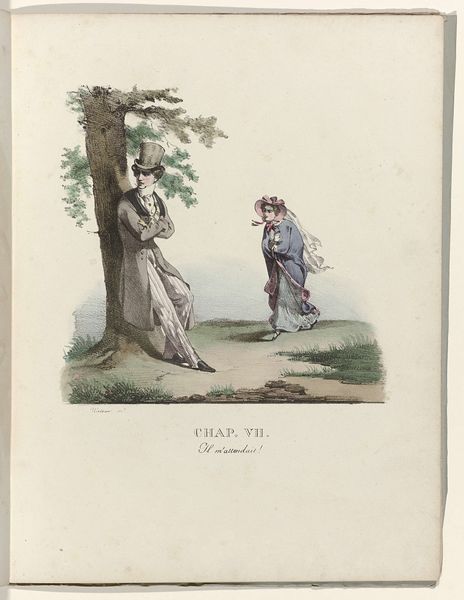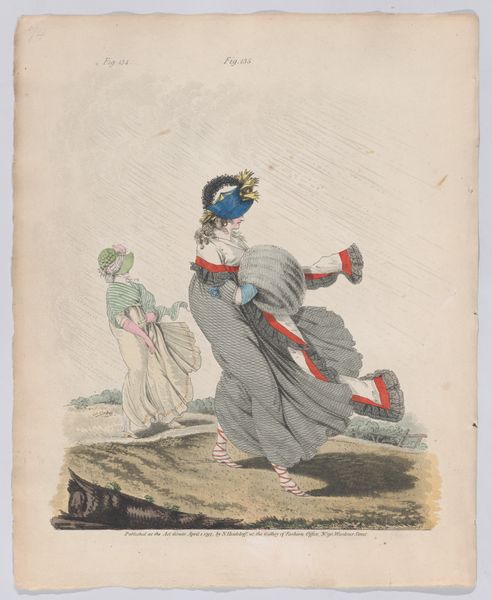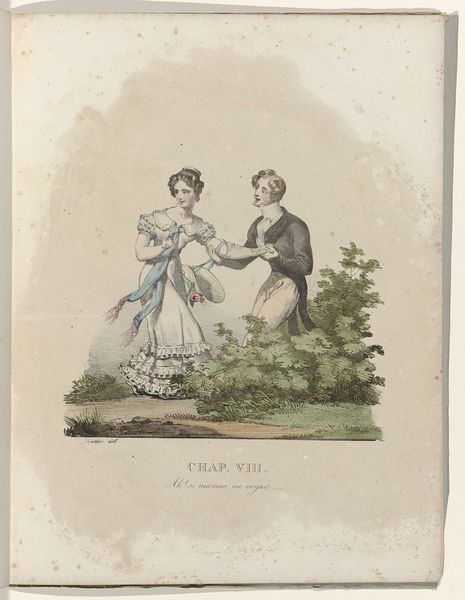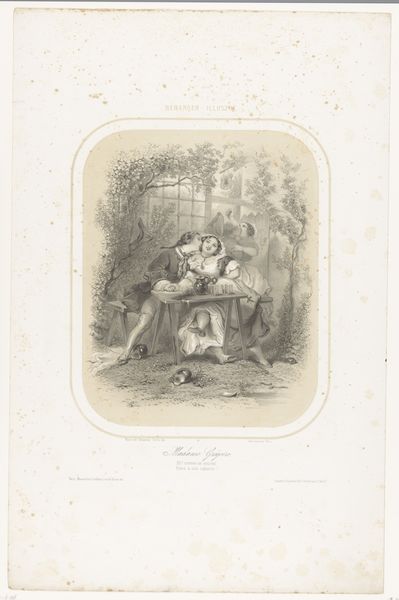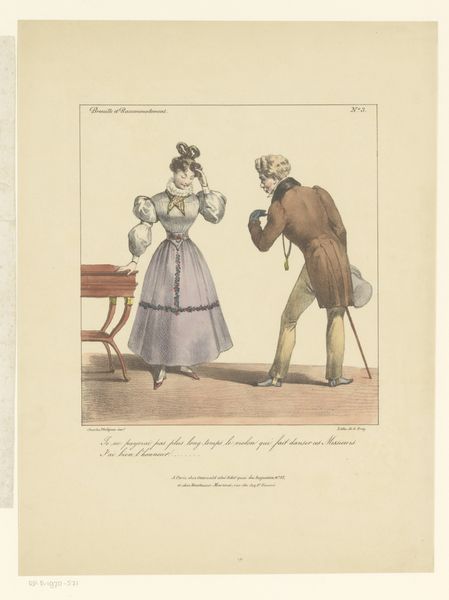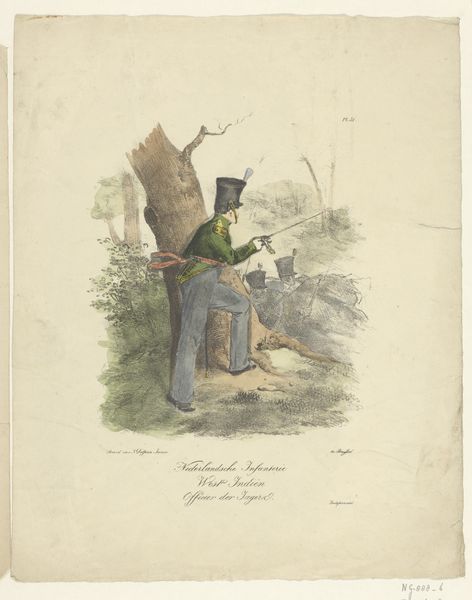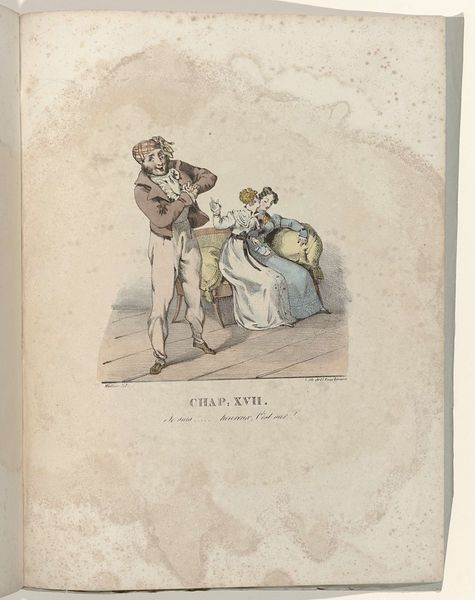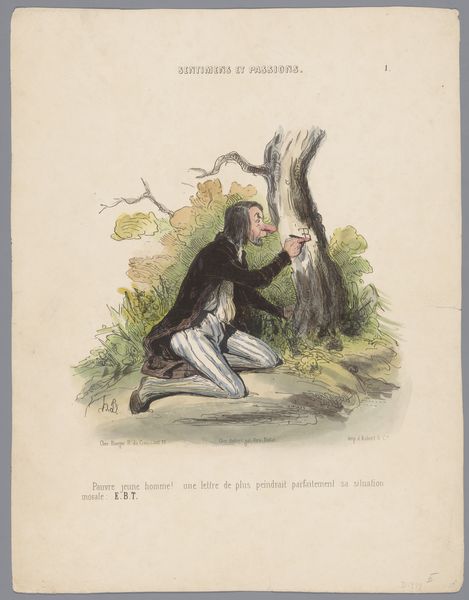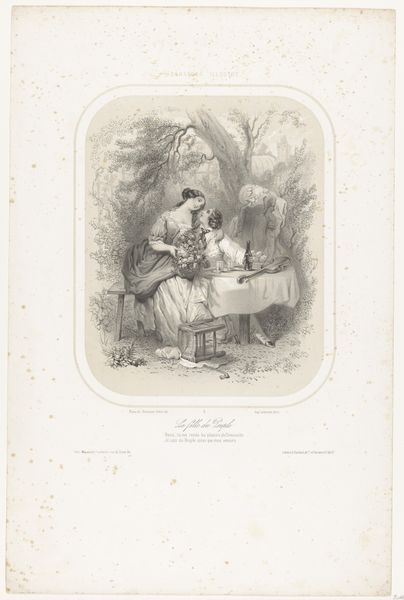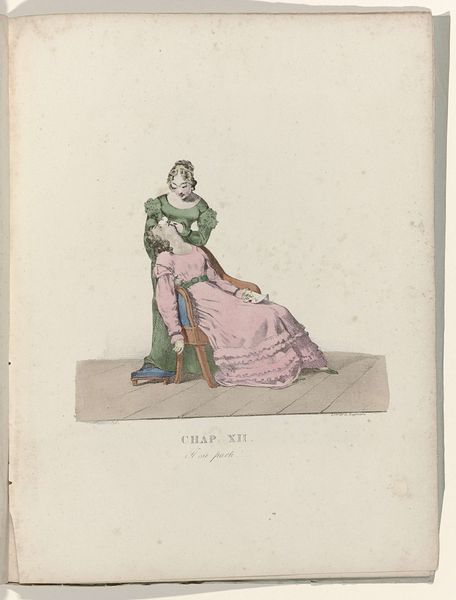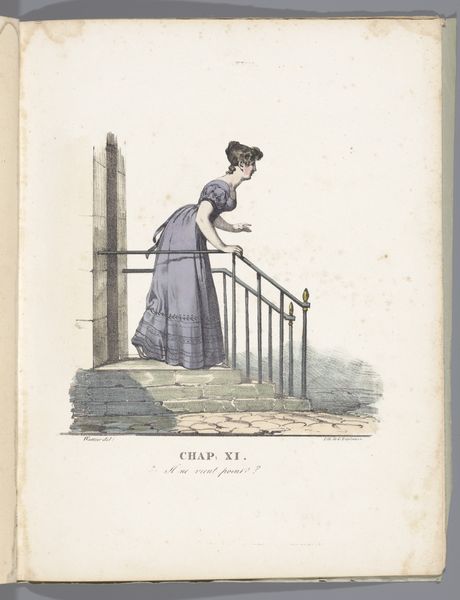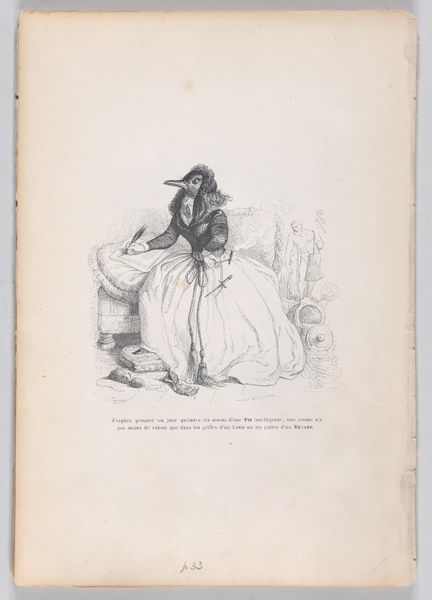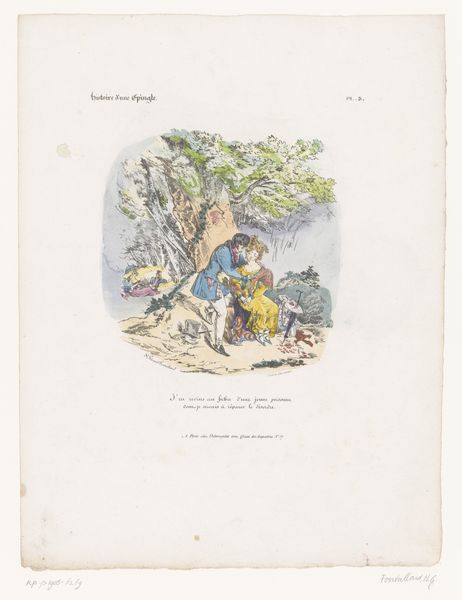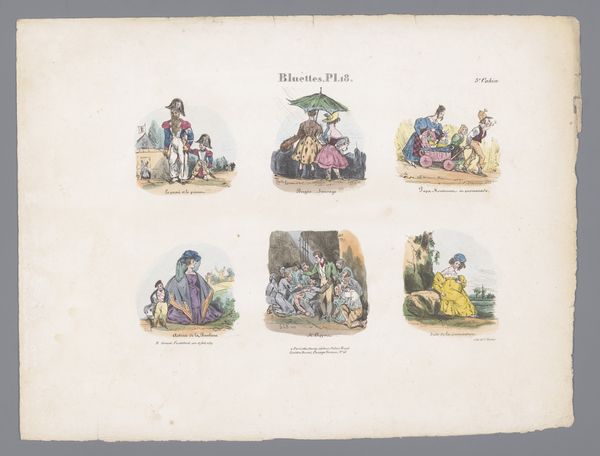
drawing, watercolor
#
drawing
#
water colours
#
narrative-art
#
figuration
#
watercolor
#
coloured pencil
#
romanticism
#
genre-painting
#
watercolor
Dimensions: height 344 mm, width 266 mm
Copyright: Rijks Museum: Open Domain
Gottfried Engelmann made this lithograph around 1828. The printmaking process, which involves drawing with a grease crayon on a prepared stone, allowed for a more spontaneous and painterly effect than traditional engraving. The material qualities here are key. The velvety texture of the lithographic crayon gives the image a soft, almost dreamlike quality. This contrasts with the hard realities of labor and class depicted. The title, translating to "The Daughter of a Milliner, Chapter X: Alas," hints at a narrative of social inequality and perhaps lost innocence. Engelmann's choice of lithography, a relatively new and accessible printing technique at the time, suggests a democratizing impulse, bringing images and stories to a wider audience. It prompts us to consider the social context in which images are made and consumed. By paying attention to materials and making, we can see how seemingly simple prints can speak volumes about the complexities of society.
Comments
No comments
Be the first to comment and join the conversation on the ultimate creative platform.
